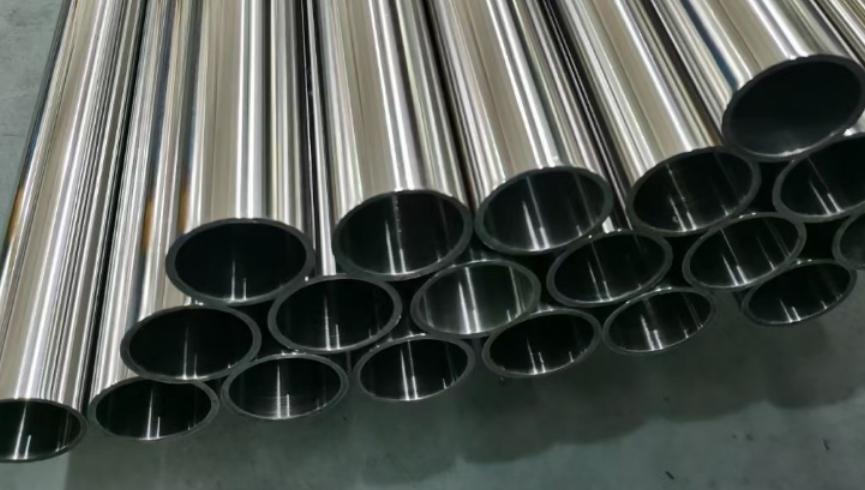به عنوان یک متخصص مجرب در زمینه متالورژی از فولاد ضد زنگ سینو, I am often called upon to provide clarity and insight into the nuances of different materials. Today, I will delve into the comparison between ASTM A240 vs فولاد ضد زنگ 304, two materials that are often mentioned in the same breath but have distinct characteristics and applications.

ASTM A240 در مقابل فولاد ضد زنگ 304 - تفاوت چیست؟
ASTM A240 is not a grade of stainless steel but a specification that covers کروم and chromium-نیکل stainless steel plates, sheets, and strip for pressure vessels and for general applications. This specification includes various grades of stainless steel, with each grade having its own unique composition and properties. On the other hand, 304 stainless steel is a specific grade of stainless steel that falls under the ASTM A240 specification. It is the most common grade of stainless steel used in a wide range of industries.
ASTM A240 vs 304 Stainless Steel – Composition
Let’s start by understanding the composition of 304 stainless steel. It is primarily composed of iron, chromium (around 18-20%), and nickel (around 8-10.5%). The chromium content is responsible for the corrosion resistance of the steel, while the nickel addition enhances its ductility and toughness. This combination of elements gives 304 stainless steel excellent formability and weldability, making it suitable for a variety of manufacturing processes.
Now, moving on to ASTM A240, this specification covers a range of stainless steel grades, each with its own specific composition and properties. While 304 stainless steel is a common grade included in ASTM A240, there are other grades as well, such as 304L, 316 ، 316L, and so on. Each of these grades is designed to meet specific requirements in terms of corrosion resistance, mechanical properties, or both.
ASTM A240 vs 304 Stainless Steel – Breadth of Application
One key difference between ASTM A240 and 304 stainless steel is the breadth of application. ASTM A240, as a specification, covers stainless steel plates, sheets, and strip used in the construction of pressure vessels and for general applications. This means that it can be found in a wide range of industries, including petrochemical, chemical processing, and power generation, where the materials are exposed to high-pressure and corrosive environments. On the other hand, 304 stainless steel, while also having a broad range of applications, is more commonly associated with architectural, food processing, and medical equipment uses due to its aesthetic appeal, ease of cleaning, and non-toxic nature.
ASTM A240 vs 304 Stainless Steel – Mechanical Properties
Another difference lies in the mechanical properties of the materials. While 304 stainless steel has excellent tensile strength, yield strength, and elongation, the specific grades covered under ASTM A240 may have varying mechanical properties depending on their composition. Some grades may be optimized for higher strength, while others may focus on improved corrosion resistance. This flexibility allows engineers and designers to select the most appropriate grade for their specific application.
ASTM A240 vs 304 Stainless Steel – Corrosion Resistance
Corrosion resistance is another crucial aspect that differs between ASTM A240 and 304 stainless steel. While 304 stainless steel offers good corrosion resistance in most environments, the various grades covered under ASTM A240 may have enhanced corrosion resistance properties, particularly in more aggressive environments or against specific chemicals. This is achieved by adjusting the alloy composition, such as increasing the chromium or nickel content, or adding other elements like molybdenum.
ASTM A240 vs 304 Stainless Steel – Cost
Cost is also a factor that needs to be considered when comparing ASTM A240 and 304 stainless steel. The cost of materials can vary depending on the grade, availability, and manufacturing process. In general, 304 stainless steel is a more commonly used and widely available grade, which may make it more cost-effective in some applications. However, for specific applications that require the unique properties of other grades covered under ASTM A240, the cost may be justified by the performance benefits.
خلاصه
In summary, ASTM A240 and 304 stainless steel are both important materials in the metallurgical world, but they have distinct characteristics and applications. ASTM A240 is a specification that covers a range of stainless steel grades, including 304, each with its own unique composition and properties. 304 stainless steel, on the other hand, is a specific grade that offers excellent corrosion resistance and mechanical properties, making it suitable for a wide range of applications.
Thank you for reading our article and we hope it can help you to have a better understanding of the differences between ASTM A240 vs 304 Stainless Steel. If you are looking for ASTM A240 & 304 Stainless Steel suppliers online now, we would advise you to visit Sino Stainless Steel.
As a leading supplier of stainless steel products from Shanghai China, Sino Stainless Steel offers customers high-quality ASTM A240 & 304 Stainless Steel, ورق های تزئینی فولاد ضد زنگ, لوله های فولادی ضد زنگ, لوله های فولادی ضد زنگ, نوارهای فولادی ضد زنگ, کویل های فولادی ضد زنگ, صفحات فولادی ضد زنگو میله های فولادی ضد زنگ با قیمت بسیار رقابتی
 86 + 18621535697-XNUMX
86 + 18621535697-XNUMX  :export81@huaxia-intl.com
:export81@huaxia-intl.com